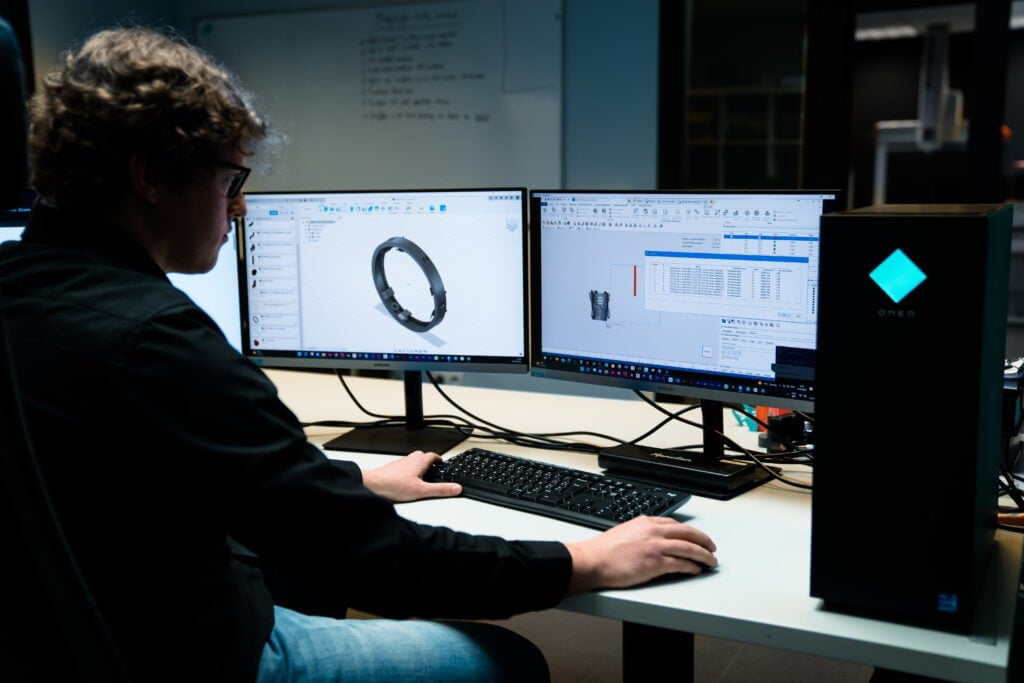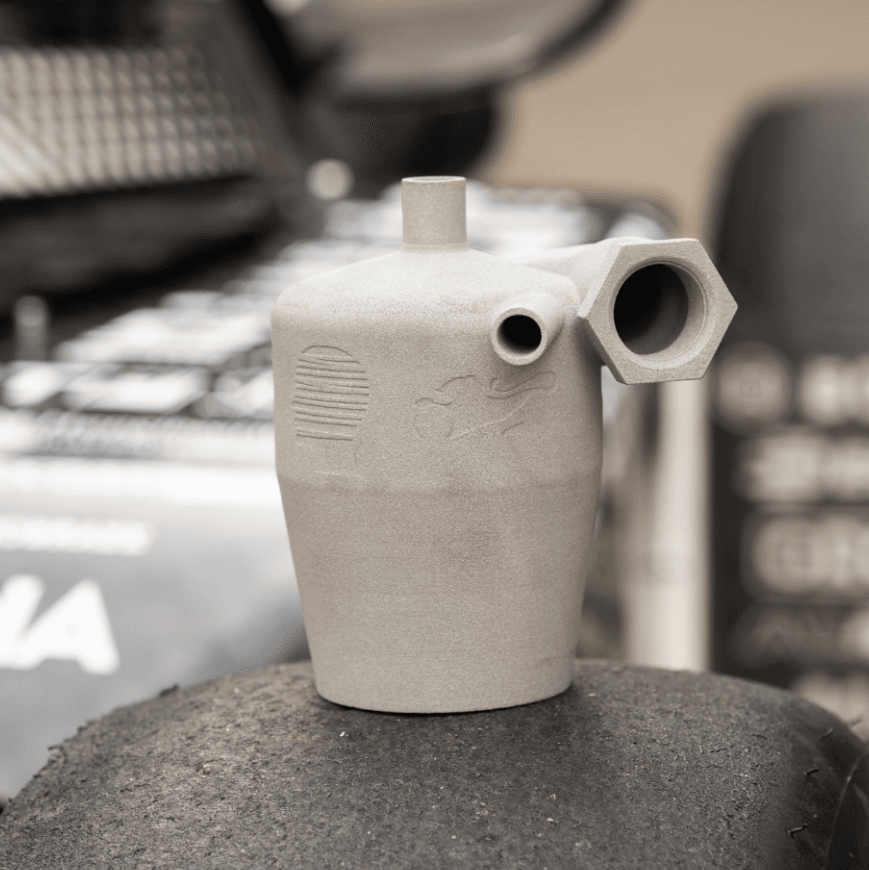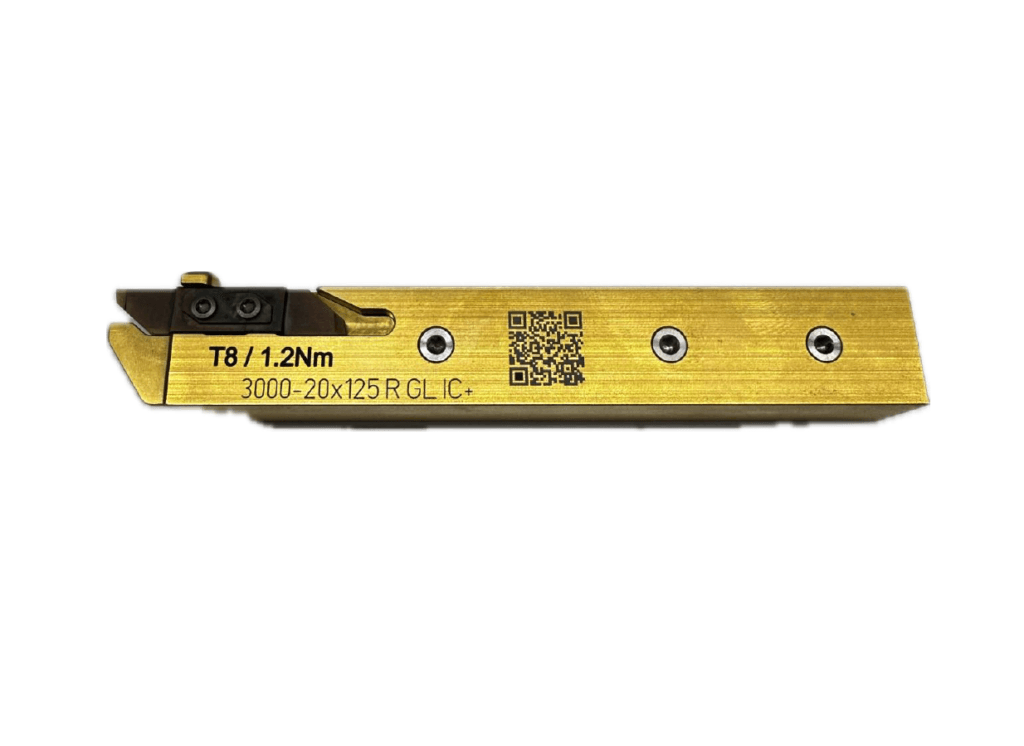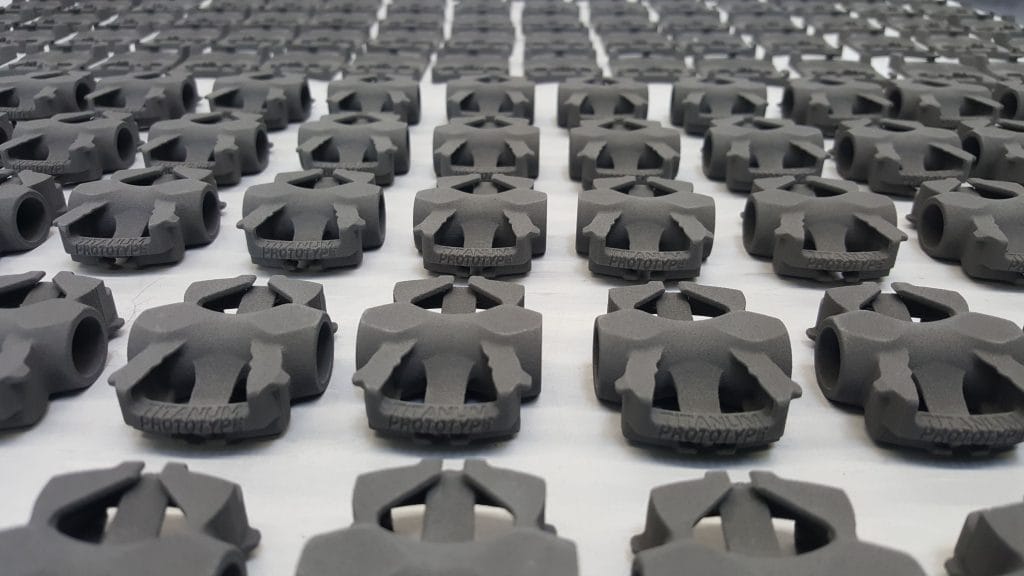Discover Cold Metal Fusion technology, where polymer and metal 3D printing merge to create robust, detailed metal parts with high production efficiency.

Cold Metal Fusion (CMF) is an innovative 3D printing technology that combines the benefits of polymer and metal printing. This process allows for the creation of strong, intricate metal parts suitable for a wide range of applications, from prototyping to high-volume production.
Cold Metal Fusion involves a unique process where metal powder is encapsulated with a polymer binder to form a feedstock. This feedstock is then built layer by layer on an LSS machine to build the part. Once the part is printed, it undergoes a debinding process to remove the polymer binder, followed by sintering, where the metal particles are fused together to create a solid, dense metal part.


The foundation of quality 3D printing starts with the use of high-quality materials. Thanks to our range of printing materials, each with unique properties and applications, you’re sure to find the right material for your project. From durable thermoplastics for industrial parts to super strong metals, our materials are carefully selected to ensure optimal performance and functionality in every print.
Selecting the right parts for Cold Metal Fusion (CMF) is crucial for maximizing efficiency and achieving the best results. At Ziggzagg, we guide you through a comprehensive methodology to identify the ideal components for CMF, ensuring your success story.
Our structured approach helps you find the perfect parts for CMF
Ideal CMF parts typically range from 15 to 170mm. For optimal results, focus on parts with a size of 40 to 150mm.
CMF excels with part numbers between 100 and 5000 per annum, benefiting from significant economies of scale.
CMF is best suited for mid- to high-value components. Filter parts by manufacturing cost per volume
Assess the part volume to bounding box volume ratio to gauge suitability. Visual screening can also help when data is incomplete. A good ratio is between 0.2 and 0.5 volume/boundingbox.
Ensure thin walls are ≥1.5mm, thick walls are ≤25mm, and smallest holes are ≥2mm.

If you are confident that your part is suitable for Cold Metal Fusion (CMF), you can order it directly through our online order tool.
If you are unsure, we start by assessing your business case to determine the feasibility and benefits of adopting CMF for your projects. Our experts conduct an analysis of your parts, focusing on key criteria such as size, material, complexity, and cost. Once suitable parts are identified, we move to the file selection phase, where we choose the optimal designs for CMF.
Next, we optimize your files to ensure they meet the specific requirements of the CMF process, enhancing features like wall thickness, support structures, and sintering suitability. Our team employs advanced software and expertise to refine each design, ensuring maximum efficiency and quality.
We use CMF machines to cater to the specific needs of our clients and their sectors. Our fully equipped industrial hall and an up-to-date material portfolio allow for an impressive production output within the shortest lead-times.





We’re confident in the excellence of our 3D printing services and we want you to be too. That’s why we offer free samples – so you can experience firsthand the precision and quality we deliver. Request your sample today and let the results speak for themselves. Embark on your journey towards innovation and quality.